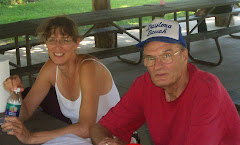All the items in this post are of the pine family. Ain't that confusing? A pine (genus) is a pine (family). But a spruce or a fir or a hemlock is not a pine (genus) but IS in the pine family. But we do that with toads/frogs and we do it with cypresses, and I'm sure there are loads of other examples.
A tree in the pine family will have cones and needles and is evergreen.
 67. SPRUCE needles are stiff. The needles are four-sided (like mint stems) and the same color all the way around the needle. Different from fir and hemlock, spruce needles are usually very sharp (which you know if you've tried to decorate one as a Christmas tree!).
67. SPRUCE needles are stiff. The needles are four-sided (like mint stems) and the same color all the way around the needle. Different from fir and hemlock, spruce needles are usually very sharp (which you know if you've tried to decorate one as a Christmas tree!). Spruce cones are papery. The cones will hang along a branch or at the end of a branch.
 68. Trees in the pine genus have bundled needles. The needles are often longer than other genuses/species in the pine family. This is a RED PINE. The long needles (5") are bunched by twos. Red-pine needles will snap when bent, while the other long two-needled species has flexible needles.
68. Trees in the pine genus have bundled needles. The needles are often longer than other genuses/species in the pine family. This is a RED PINE. The long needles (5") are bunched by twos. Red-pine needles will snap when bent, while the other long two-needled species has flexible needles.Pine cones will be more woody than spruce or fir cones.
Hemlock cones are woody (like pine cones) but are tiny. Hemlock cones drip from the ends of branches.
The hemlock tree is not poisonous. It was the hemlock wildflower that killed Socrates.
I didn't give hemlock a number because, although I've occasionally seen them around the southeastern part of the state, I haven't seen any within a mile of the house.
 Like hemlock, the firs have soft, short, flat needles. Also like hemlocks, the underneath side of the needles is lighter colored than the top side.
Like hemlock, the firs have soft, short, flat needles. Also like hemlocks, the underneath side of the needles is lighter colored than the top side.  The cones of firs are different from the other "pines"; the cones on a fir will stand up on the branches. My FRASIER FIR is not numbered because firs aren't native to the area. You can usually only find firs in the midwest in arboretums and at Christmas tree farms, ... or by our old house where I planted a Christmas-tree patch.
The cones of firs are different from the other "pines"; the cones on a fir will stand up on the branches. My FRASIER FIR is not numbered because firs aren't native to the area. You can usually only find firs in the midwest in arboretums and at Christmas tree farms, ... or by our old house where I planted a Christmas-tree patch.So identifying the genus within the pine family begins with:
woody or papery cones,
-- tiny woody ones at the end of a branch = hemlock
-- bigger woody ones = pine
-- papery ones standing upright = fir
-- papery ones hanging = spruce
needles,
-- square, stiff, and sharp = spruce
-- long and bundled = pine
-- short, soft, arranged around the twig = fir
-- short, soft, two rows along each twig = hemlock
I'm sure I've oversimplified this. But it's a start in separating out the different kinds of trees.



Do you take all the pictures? I was just wondering.
ReplyDeleteMost. Not all.
ReplyDelete